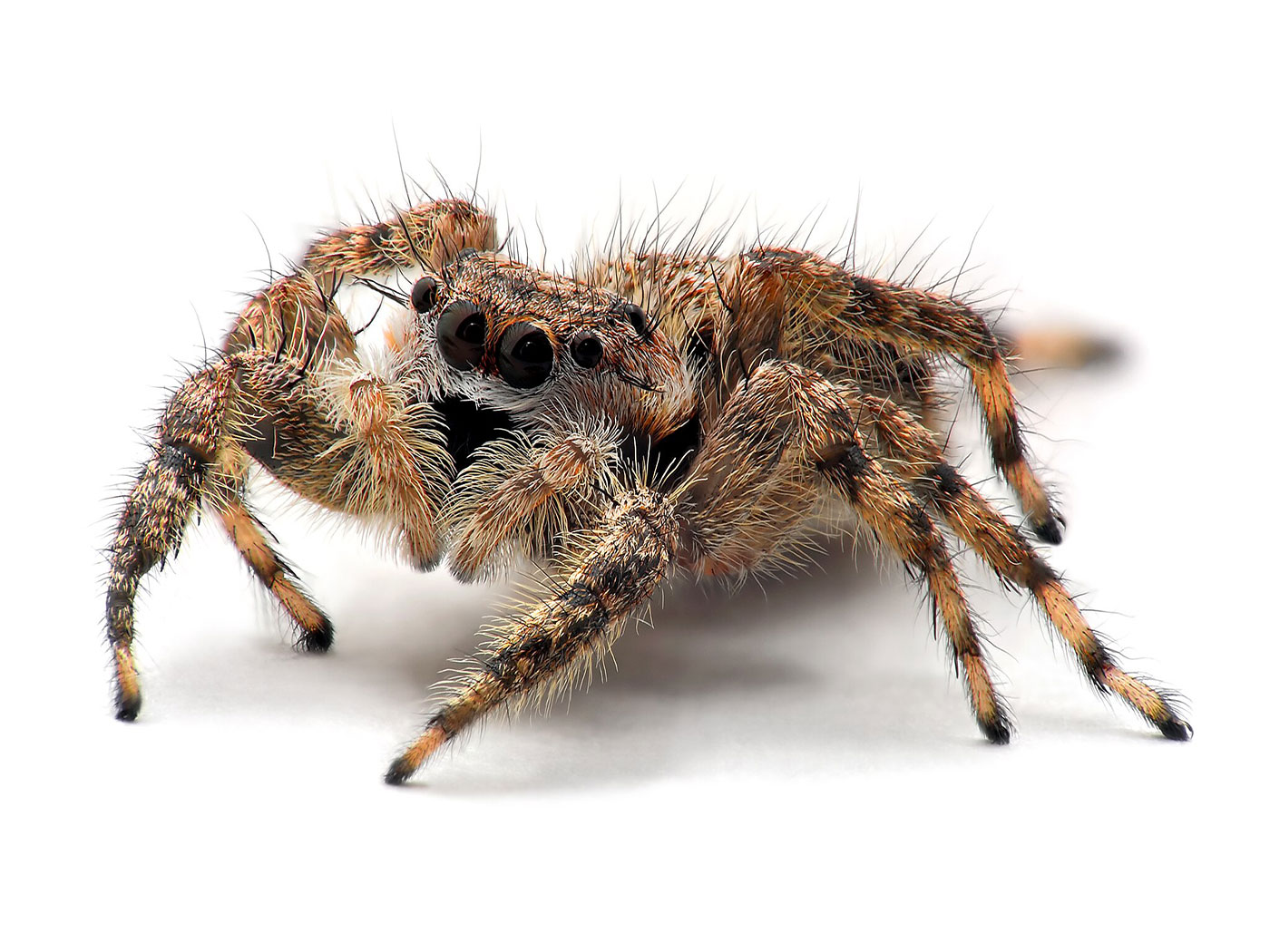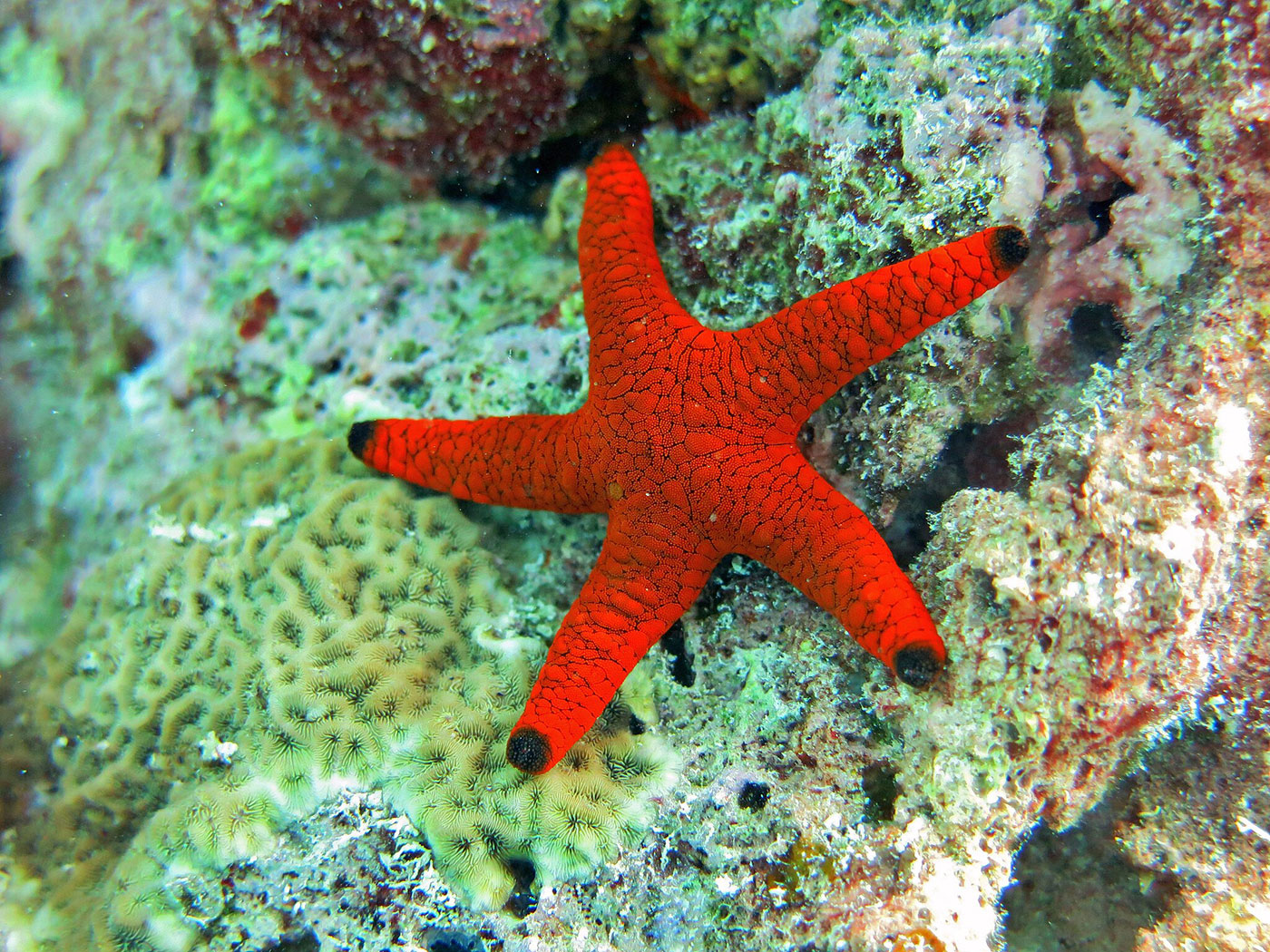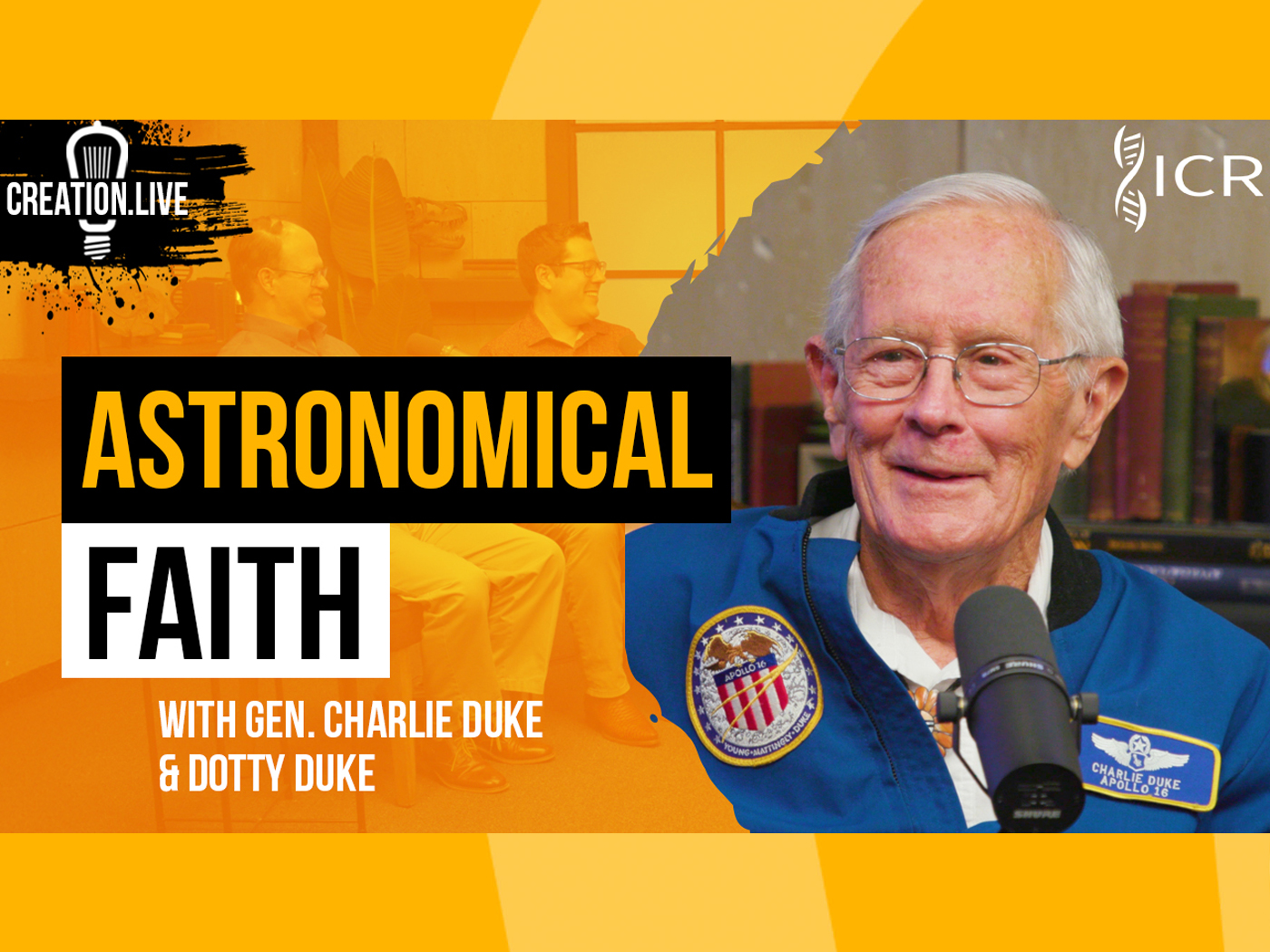Dr. Henry M. Morris, father of the modern creation science movement, devoted his life to upholding the accuracy and authority of God’s Word. Combining scientific knowledge with a thorough understanding of Scripture, he clearly and succinctly combated the errors of evolution. In the article below, Dr. Morris highlights evolution’s false claims, using the words of evolutionists themselves. His words are as true today as when they were first written.
Evolutionary belief is a remarkable and largely unexplained phenomenon. It is a belief held by most intellectuals all over the world, despite the fact that there is no real scientific evidence for it at all. Evolutionists allege that evolution is a proved scientific fact, based on a multitude of scientific proofs, but they are unable to document even one of these supposed proofs! This curious situation is illustrated below in quotations from several leading evolutionary scientists.
THE ALTOGETHER MISSING EVIDENCE
No Evolution at Present
The lack of a case for evolution is most clearly recognized by the fact that no one has ever seen it happen.
Evolution, at least in the sense that Darwin speaks of it, cannot be detected within the lifetime of a single observer.1
"Horizontal variations" (e.g., the different varieties of dogs) are not real evolution, of course, nor are "mutations," which are always either neutral or harmful, as far as all known mutations are concerned. A process which has never been observed to occur, in all human history, should not be called scientific.
No New Species
Charles Darwin is popularly supposed to have solved the problem of "the origin of species," in his famous 1859 book of that title. However, as the eminent Harvard biologist Ernst Mayr, one of the nation's top evolutionists, observed:
Darwin never really did discuss the origin of species in his On the Origin of Species.2
Not only could Darwin not cite a single example of a new species originating, but neither has anyone else, in all the subsequent century of evolutionary study.
No one has ever produced a species by mechanisms of natural selection. No one has gotten near it.3
No Known Mechanism of Evolution
It is also a very curious fact that no one understands how evolution works. Evolutionists commonly protest that they know evolution is true, but they can't seem to determine its mechanism.
Evolution is...troubled from within by the troubling complexities of genetic and developmental mechanisms and new questions about the central mystery--speciation itself.4
One would think that in the 100+ years following Darwin, with thousands of trained biologists studying the problem and using millions of dollars worth of complex lab equipment, they would have worked it out by now, but the mechanism which originates new species is still "the central mystery."
No Fossil Evidence
It used to be claimed that the best evidence for evolution was the fossil record, but the fact is that the billions of known fossils have not yet yielded a single unequivocal transitional form with transitional structures in the process of evolving.
The known fossil record fails to document a single example of phyletic evolution accomplishing a major morphologic transition.5
This ubiquitous absence of intermediate forms is true not only for "major morphologic transitions," but even for most species.
As is now well known, most fossil species appear instantaneously in the fossil record, persist for some millions of years virtually unchanged, only to disappear abruptly.6
As a result, many modern evolutionists agree with the following assessment:
In any case, no real evolutionist…uses the fossil record as evidence in favor of the theory of evolution as opposed to special creation.7
No Order in the Fossils
Not only are there no true transitional forms in the fossils; there is not even any general evidence of evolutionary progression in the actual fossil sequences.
The fossil record of evolution is amenable to a wide variety of models ranging from completely deterministic to completely stochastic.8
I regard the failure to find a clear "vector of progress" in life's history as the most puzzling fact of the fossil record....we have sought to impose a pattern that we hoped to find on a world that does not really display it.9
The superficial appearance of an evolutionary pattern in the fossil record has actually been imposed on it by the fact that the rocks containing the fossils have themselves been "dated" by their fossils.
And this poses something of a problem: If we date the rocks by their fossils, how can we then turn around and talk about patterns of evolutionary change through time in the fossil record?10
A circular argument arises: Interpret the fossil record in the terms of a particular theory of evolution, inspect the interpretation, and note that it confirms the theory. Well, it would, wouldn't it?11
No Evidence That Evolution Is Possible
The basic reason why there is no scientific evidence of evolution in either the present or the past is that the law of increasing entropy, or the second law of thermodynamics, contradicts the very premise of evolution. The evolutionist assumes that the whole universe has evolved upward from a single primeval particle to human beings, but the second law (one of the best-proved laws of science) says that the whole universe is running down into complete disorder.
How can the forces of biological development and the forces of physical degeneration be operating at cross purposes? It would take, of course, a far greater mind than mine even to attempt to penetrate this riddle. I can only pose the question.12
Evolutionists commonly attempt to sidestep this question by asserting that the second law applies only to isolated systems. But this is wrong!
[T]he quantity of entropy generated locally cannot be negative irrespective of whether the system is isolated or not.13
Ordinarily the second law is stated for isolated systems, but the second law applies equally well to open systems.14
Entropy can be forced to decrease in an open system, if enough organizing energy and information is applied to it from outside the system. This externally introduced complexity would have to be adequate to overcome the normal internal increase in entropy when raw energy is added from outside. However, no such external source of organized and energized information is available to the supposed evolutionary process. Raw solar energy is not organized information!
No Evidence from Similarities
The existence of similarities between organisms--whether in external morphology or internal biochemistry--is easily explained as the Creator's design of similar systems for similar functions, but such similarities are not explicable by common evolutionary descent.
It is now clear that the pride with which it was assumed that the inheritance of homologous structures from a common ancestor explained homology was misplaced.15
The really significant finding that comes to light from comparing the proteins' amino acid sequences is that it is impossible to arrange them in any sort of an evolutionary series.16
No Recapitulation or Vestigial Organs
The old arguments for evolution based on the recapitulation theory (the idea that embryonic development in the womb recapitulates the evolution of the species) and vestigial organs ("useless" organs believed to have been useful in an earlier stage of evolution) have long been discredited.
[T]he theory of recapitulation...should be defunct today.17
An analysis of the difficulties in unambiguously identifying functionless structures...leads to the conclusion that "vestigial organs" provide no evidence for evolutionary theory.18
THE RESIDUAL CASE FOR EVOLUTION
In spite of these admissions, all the scientists quoted above continued to believe in evolution. Limited space precludes giving the full context of each quotation, but each point noted is fully warranted in context, and could be further documented from other authorities also.19
What, then, remains of the case for evolution? Stephen Gould falls back on what he believes are "imperfections" in nature.
If there were no imperfections, there would be no evidence to favor evolution by natural selection over creation.20
But this is essentially the same as the old discredited argument from vestigial organs, and merely assumes our present ignorance to be knowledge. Even if there are imperfections in nature (as well as harmful mutations, vestigial organs, extinctions, etc.) such trends are opposite to any imaginary evolutionary progress, so can hardly prove evolution.
There is one final argument, however: Gould's fellow atheist and Marxist at Harvard, geneticist Richard Lewontin, said:
No one has ever found an organism that is known not to have parents, or a parent. This is the strongest evidence on behalf of evolution.21
That is, if one denies a Creator, the existence of life proves evolution!
But apart from its necessity as a support for atheism or pantheism, there is clearly no scientific evidence for evolution.
The absence of evidence for evolution does not, by itself, prove creation, of course; nevertheless, special creation is clearly the only alternative to evolution.
Creation and evolution, between them, exhaust the possible explanations for the origin of living things. Organisms either appeared on the earth fully developed or they did not. If they did not, they must have developed from pre-existing species by some process of modification. If they did appear in a fully developed state, they must have been created by some omnipotent intelligence.22
While we admittedly cannot prove creation, it is important to note that all the above facts offered as evidence against evolution (gaps between kinds, no evolutionary mechanism, increasing entropy, etc.) are actual predictions from the creation "model"!
Creationists prefer the reasonable faith of creationism, which is supported by all the real scientific evidence, to the credulous faith of evolutionism, which is supported by no real scientific evidence. The question remains unanswered (scientifically, at least) as to why evolutionists prefer to believe in evolution.
References
- Kits, David. 1974. Paleontology and Evolutionary Theory. Evolution. 28: 466.
- In Mayr's book Systematics and the Origin of Species (1942), as cited by prominent modern evolutionist Niles Eldredge in his book Time Frames: The Rethinking of Darwinian Evolution and the Theory of Punctuated Equilibria (New York: Simon and Schuster, 1985), 33.
- Colin Patterson, "Cladistics." Interview on BBC, March 4, 1982. Dr. Patterson was the senior paleontologist at the British Museum of Natural History. In this context, the word "species" can refer to something like the Genesis 1 "kind": life forms that, though capable of small changes, can interbreed and have core characteristic morphologies.
- Thompson, Keith S. 1982. The Meanings of Evolution. American Scientist. 70: 529.
- Stanley, Steven M. 1979. Macroevolution: Pattern and Process. San Francisco: W.M. Freeman and Co., 39.
- Kemp, Tom. 1985. A Fresh Look at the Fossil Record. New Scientist. 108: 67. Dr. Kemp is University Lecturer and a curator of the Oxford University Museum of Natural History.
- Ridley, Mark. 1981. Who Doubts Evolution? New Scientist. 90: 831. Dr. Ridley is a member of the Department of Zoology at Oxford University.
- Raup, David M. 1977. Probabilistic Models in Evolutionary Biology. American Scientist. 166: 57.
- Gould, Stephen Jay. 1984. The Ediacaran Experiment. Natural History. 93: 23. Dr. Gould, Professor of Geology at Harvard, was arguably the nation's most prominent modern evolutionist of his time.
- Eldredge, Time Frames, 52.
- Kemp, A Fresh Look at the Fossil Record, 66.
- Sydney Harris, "Second Law of Thermodynamics." This nationally syndicated column appeared in the San Francisco Examiner on January 27, 1984.
- Sommerfeld, Arnold. 1956. Thermodynamics and Statistical Mechanics. New York: Academic Press, 155.
- Ross, John. Letter-to-the-Editor. Chemical and Engineering News. July 7, 1980, 40.
- de Beer, Gavin. 1971. Homology, an Unsolved Problem. London: Oxford University Press, 15. Sir Gavin was a leading European evolutionist.
- Denton, Michael. 1985. Evolution: A Theory in Crisis. London: Burnett Books, 289. Denton is a research microbiologist.
- Gould, Stephen Jay. Dr. Down's Syndrome. Natural History. April 1980, 144. The recapitulation theory is not only discredited, but also fraudulent. See Pennisi, E. 1997. Haeckel's Embryos: Fraud Rediscovered. Science. 277 (5331):1435.
- Scadding, S. R. 1981. Do "Vestigial Organs" Provide Evidence for Evolution? Evolutionary Theory. 5: 173.
- Many books carried by ICR offer in-depth examinations on this subject. Visit icr.org/store for available materials.
- As cited by Jeremy Cherfas in "The Difficulties of Darwinism," New Scientist (May 17, 1984), 102: 29.
- As reported in an interview by Tom Bethell, "Agnostic Evolutionists," Harper's (February 1985), 61.
- Futuyma, D. J. 1983. Science on Trial. New York: Pantheon Books, 197.
Adapted from Dr. Morris' article "The Vanishing Case for Evolution" in the June 1986 edition of Acts & Facts.
* Dr. Morris (1918-2006) was Founder of the Institute for Creation Research.
Cite this article: Morris, H. M. 2009. The Vanishing Case for Evolution. Acts & Facts. 38 (2): 17.














